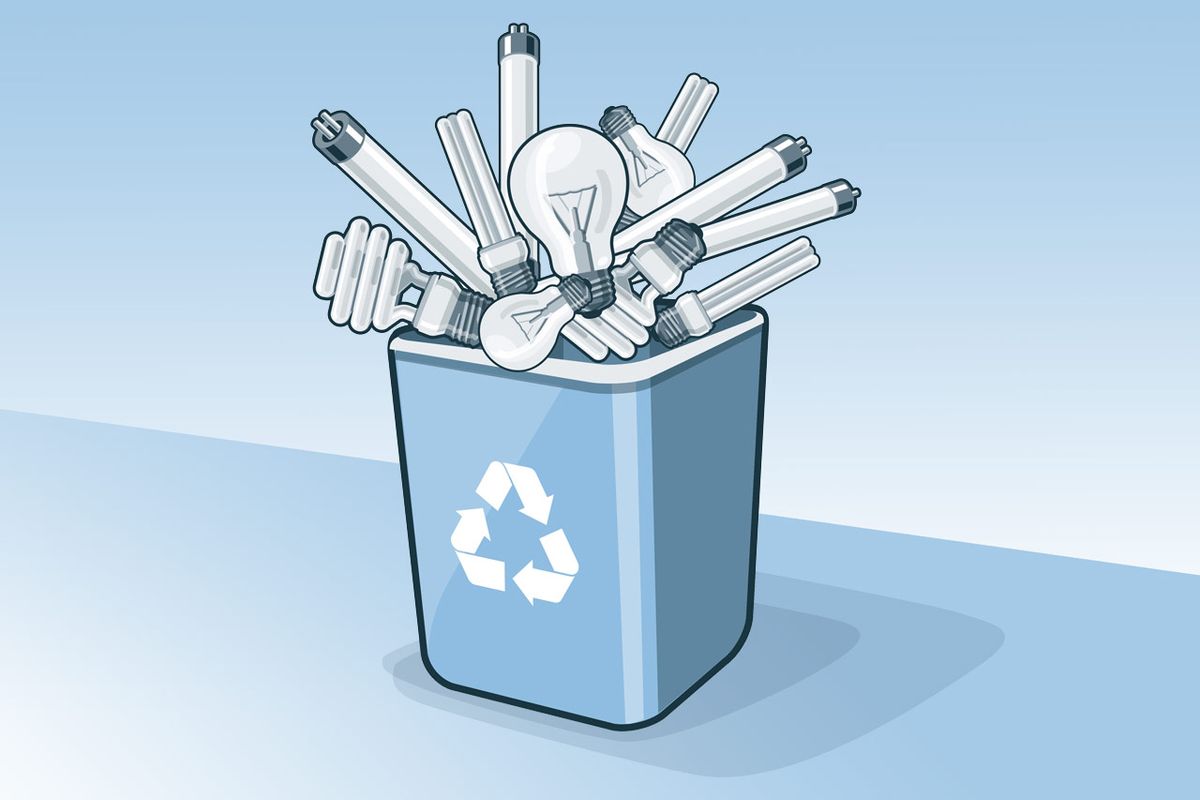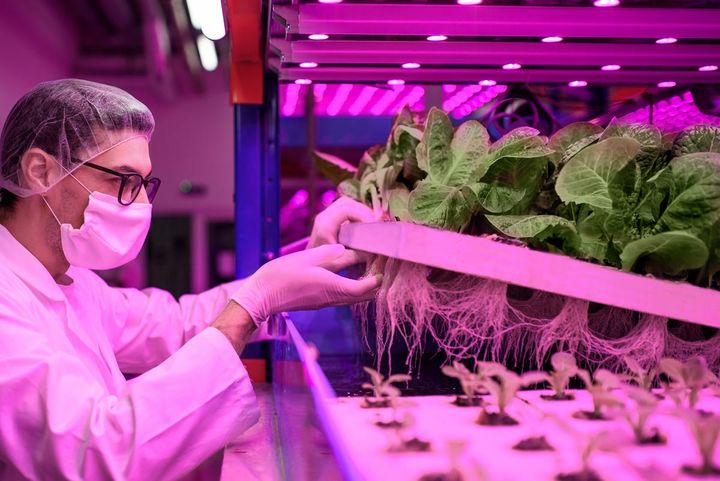How to Properly Dispose of Light Bulbs

When upgrading the lighting in your home or office, it is very important to know how to dispose of your old light bulbs. Whether it be incandescent, halogen, fluorescent, CFLS, or LED bulbs, some bulbs contain toxic components that are hazardous to human health and can negatively impact the environment. Let's go over the proper, and safe, way to dispose of light bulbs.
Incandescent light bulbs contain a wire filament in a thin, sealed glass bulb. These bulbs, that we have been using since the early 1900s, are not toxic. Incandescent bulbs can be safely thrown away in your regular garbage. Not, however, with your recycling. The tiny wire filaments are too difficult to remove during the glass recycling process. A good tip for disposing incandescent light bulbs is to slip them into another disposable packaging, a cereal box for example, before putting it in the trash. This way, if the bulb breaks, the sharp glass won't puncture the plastic bag, injuring you or a sanitation worker.
Similar to incandescent bulbs, halogen bulbs also contain wire filaments, but are sealed under pressure in thick, high-silica glass bulbs. They too can be disposed of in your regular garbage, but again, not with the recycling. Even with the thicker glass, it is still wise to place the halogen bulb in another type of disposable packing before throwing them in the garbage.
Fluorescent tubes, while a favorite for being inexpensive, contains mercury. Because of this, fluorescent tubes should not be thrown out with ordinary garbage. It is actually the law in California, Maine, Massachusetts, Minnesota, New Hampshire, Vermont, and Washington to recycle fluorescent tubes as of 2018. Many home improvement stores and other major retailers offer fluorescent recycling collection stations where consumers can drop off their old fluorescent tubes free of charge. Check out Earth 911 and enter "fluorescent tubes" and your zip code to find a list of collection sites closest to you.
Compact fluorescent bulbs (CFLs), like fluorescent tubes, also contain mercury and should be recycled. You can, again, visit Earth 911 and enter "CFLs" and your zip code to find a list of collection sites closest to you. If you have a broken fluorescent or CFL tube that you need to dispose, you need to take extra care since a small amount of mercury vapor will escape when the tube breaks. The United States Environmental Protection Agency recommends the following safe disposal method:
- Remove everyone (including pets) from the room and air the room out for 10 minutes.
- Turn off your HVAC system to keep from circulating potentially toxic mercury vapor.
- Do not vacuum. This could distribute mercury vapor in the room.
- Use stiff paper, such as an index card, to scoop up the broken bits of glass and powder residue and dispose of them both in a plastic bag or glass jar.
- Use the sticky side of duct tape to lift any residual tiny bits of glass or power from the surface.
- Use disposable wet wipes or damp paper towels to wipe clean the area. Place wipes in the same plastic bag or glass jar along with the broken glass, powder, and used duct tape.
- Contact your local waste authority or check the Earth 911 to locate a collection station near you. The EPA does suggest, if your state or community does not regulate the disposal of CFLs or fluorescent bulbs, to place the broken CFL in a plastic bag and then putting it in your outside trash can for pickup.
LED bulbs create light by sending electrons through a semiconductor material, triggering a process known as "electroluminescence", which is similar to the way a laser works. Not only do LEDs provide long-lasting illumination and use a fraction of the energy than their incandescent predecessor, but they are also safe to dispose of in your regular household garbage. There are no national LED recycling regulations or initiatives to date, but if you prefer to recycle your LED bulbs, contact your local recycling center to see if they take LEDs.
Check back to see new articles and guides , or feel free to click another article to experience more great insights and advice.



